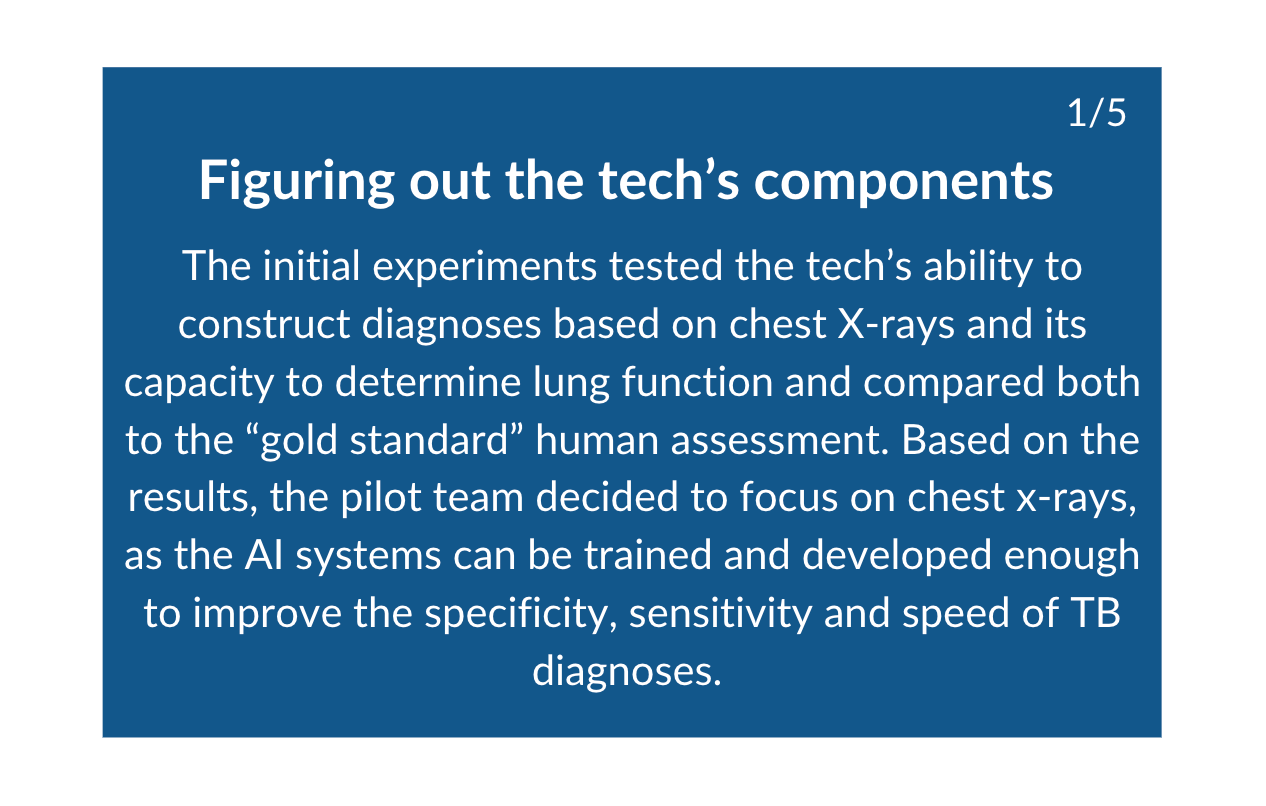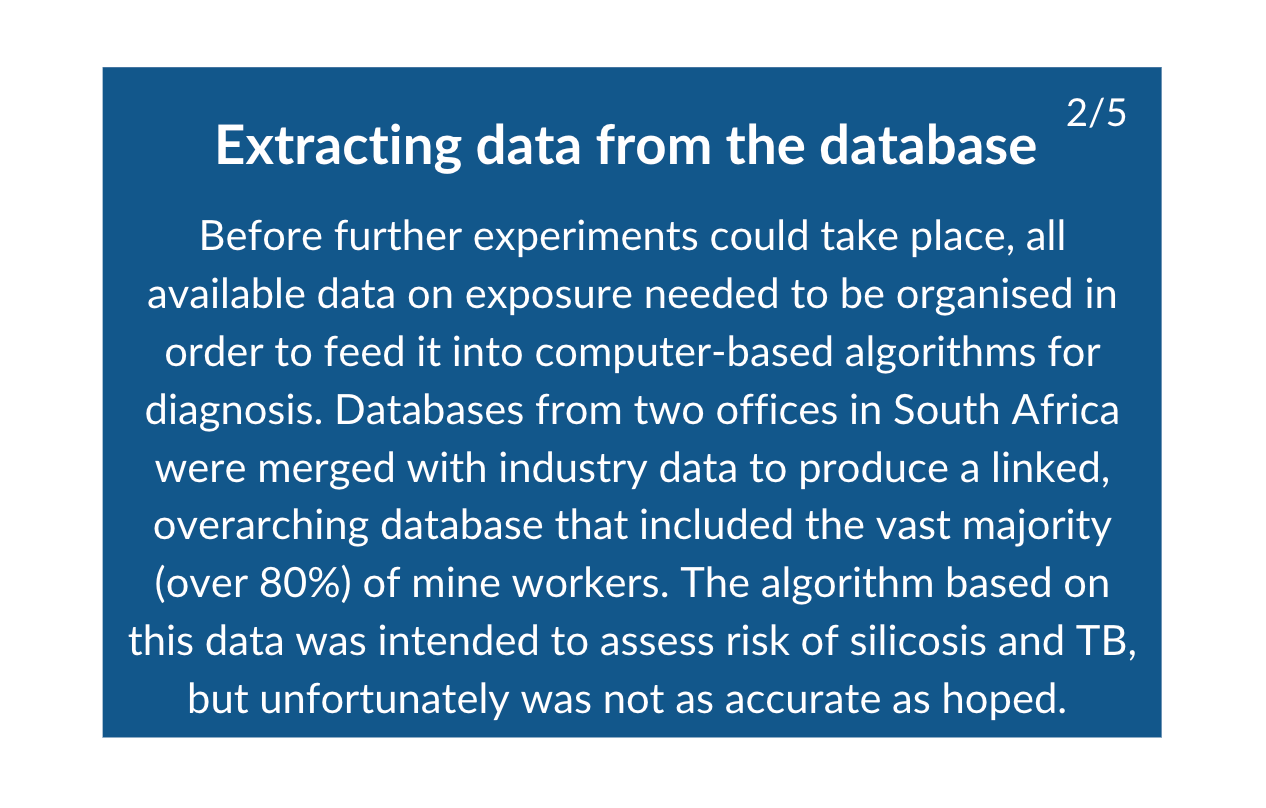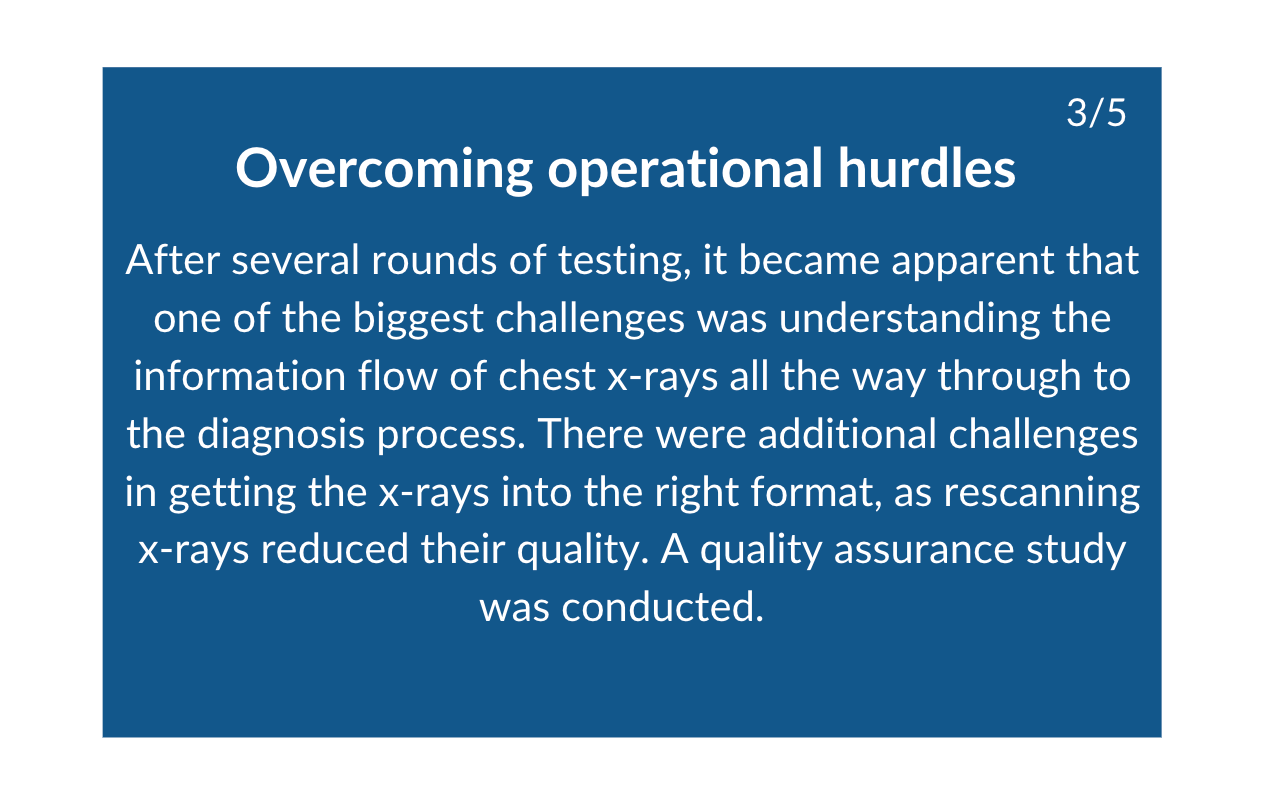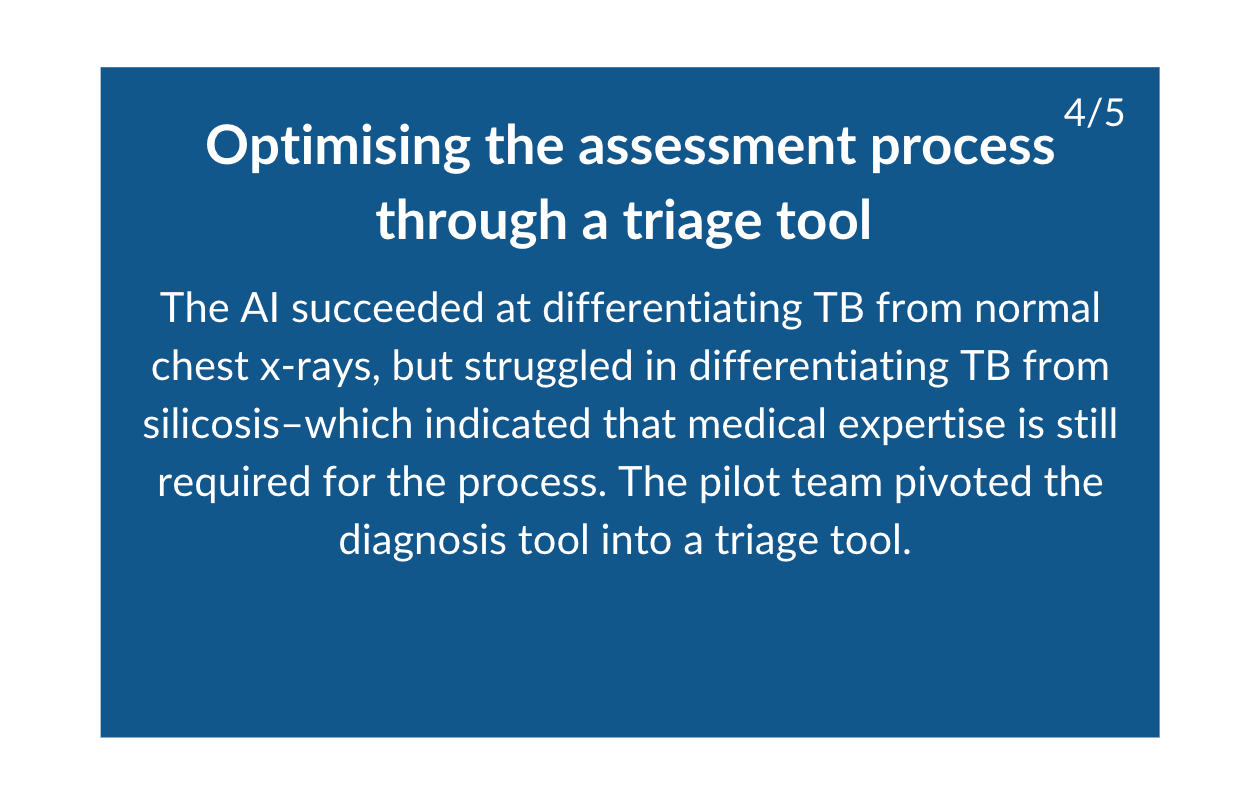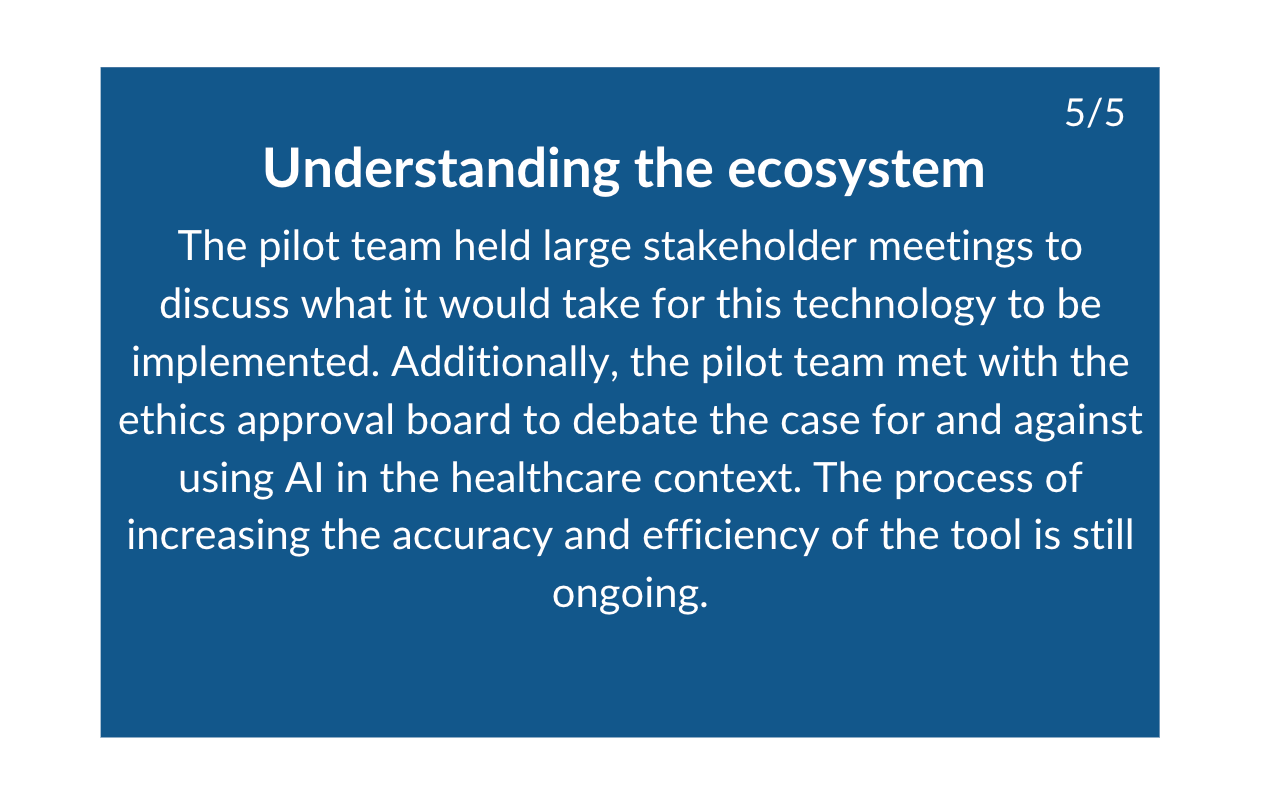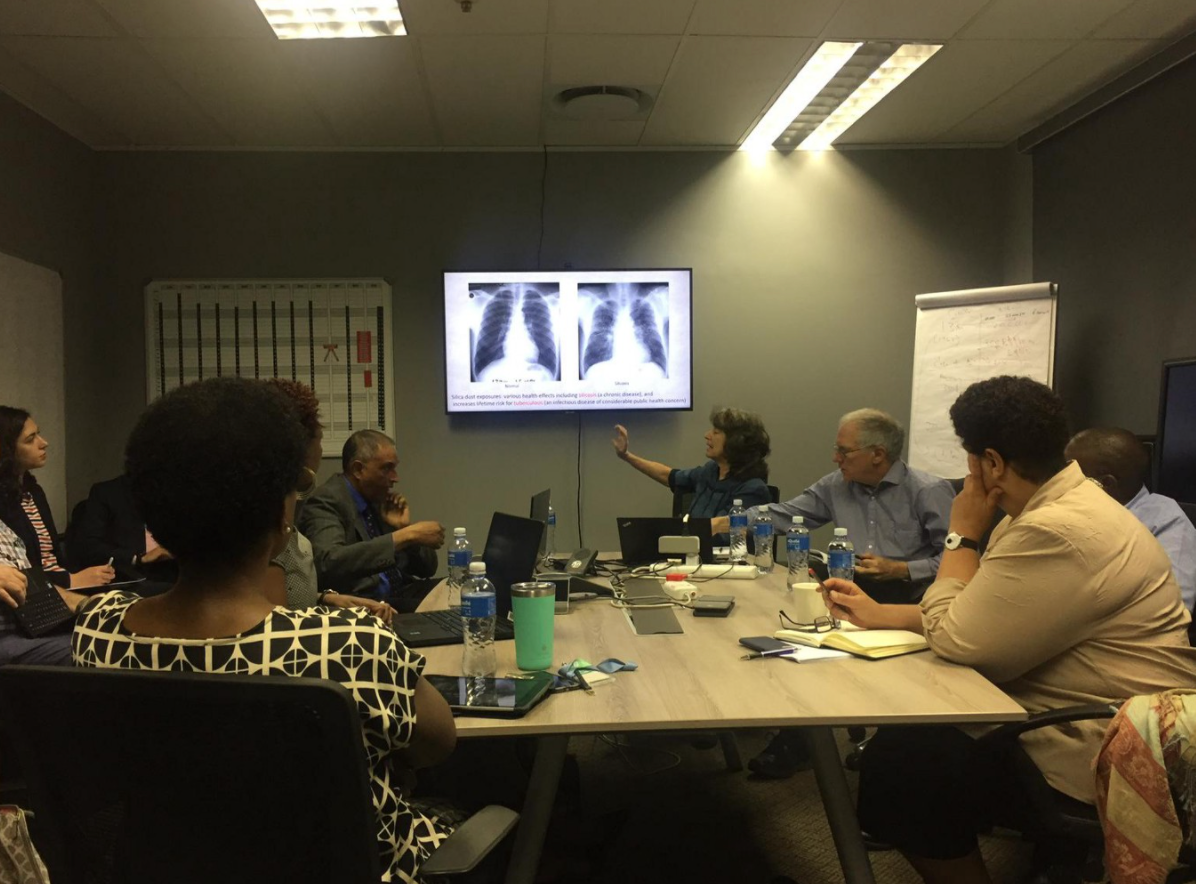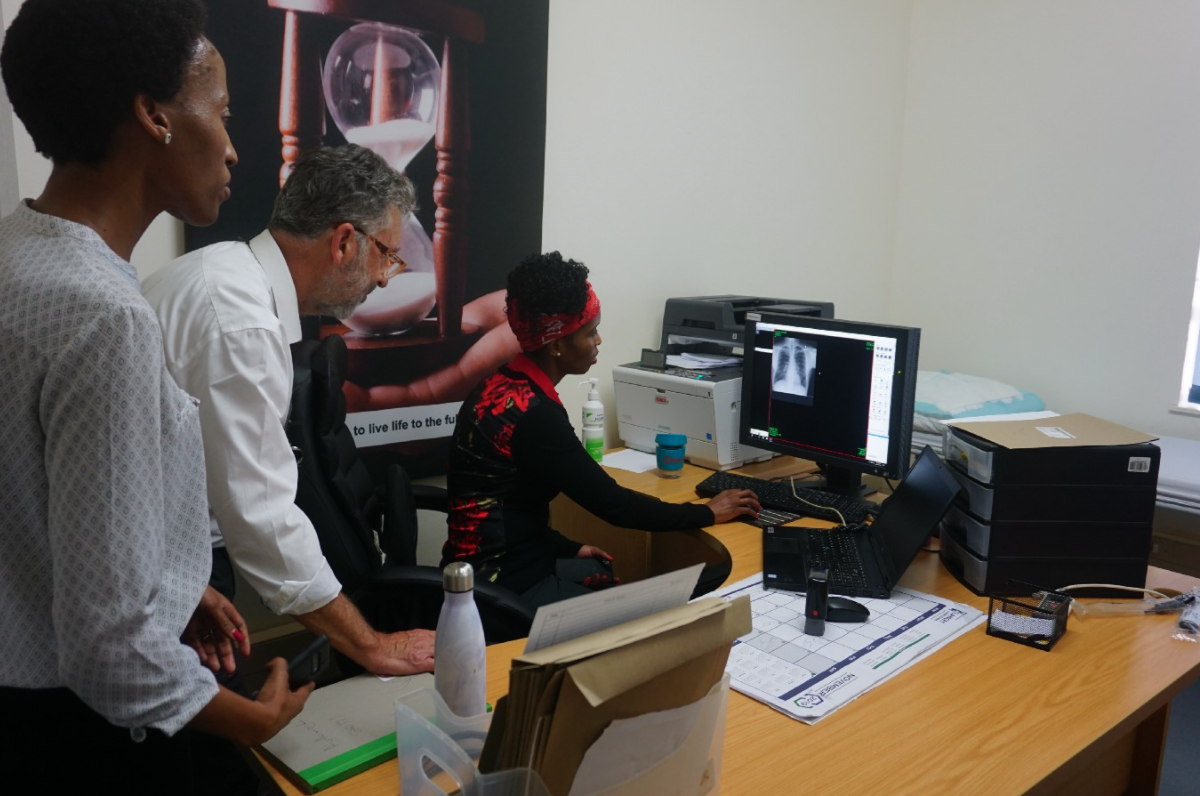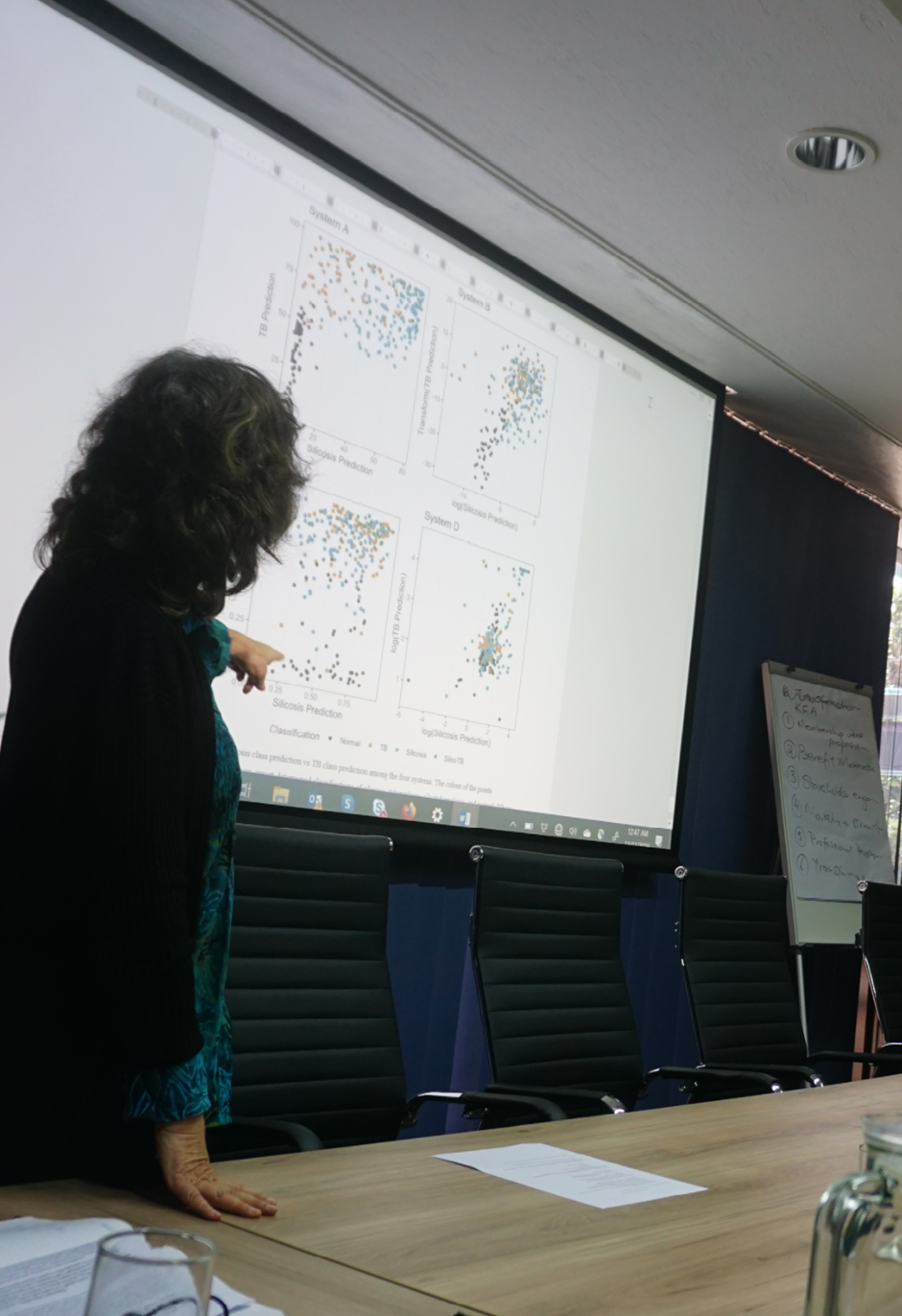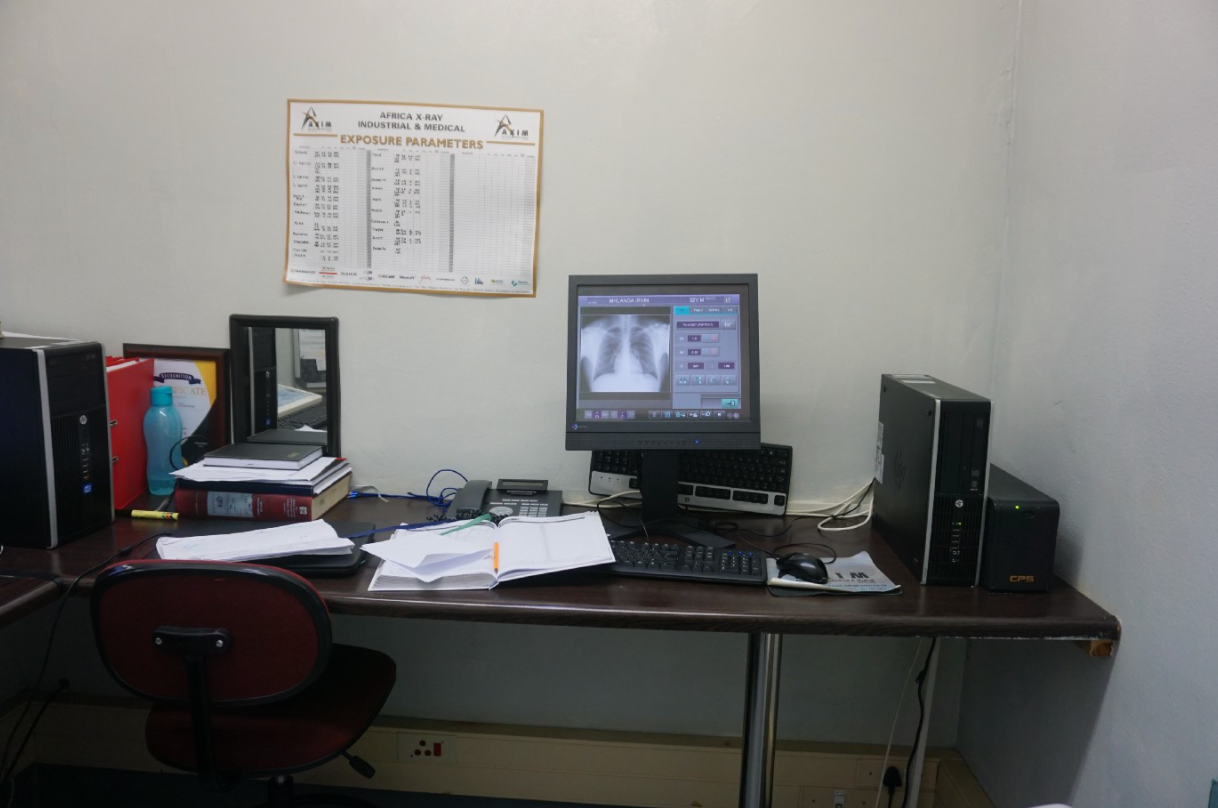AI-assisted tools to Diagnose TB and Silicosis
THE QUESTION
Can artificial intelligence be used to accurately diagnose TB and silicosis?
LOCATION: South Africa
SECTOR: Health
TECH: AI
TIMELINE: September 2019 - Closed
PIONEER: Fiona Clark
PARTNERS: University of British Columbia, Medical Bureau for Occupational Diseases, Compensation Commission for Occupational Diseases, Wits Health Consortium
The Challenge
Hundreds of thousands of workers in South and Southern Africa suffer from TB, silicosis and other respiratory diseases due to the long-term exposure for silica in the mines. A historic ruling in July 2019 passed a settlement of 5 billion ZAR (~200M GBP) to be awarded to victims and their dependents, but most claims from miners are unprocessed or incomplete with a 500-day backlog due to poor administrative systems and a shortage of skilled medical staff.
The Idea
This pilot implemented an automated artificial intelligence (AI) diagnostic triage tool that is based on a machine-learning model that could detect and assess the presence of TB, silicosis and other respiratory diseases from miners’ chest X-rays. This tool intended to reduce the need for inputs from skilled medical staff and, thus, facilitating more prompt compensation pay-outs to the affected miners. The pilot team added demographic, exposure and other clinical data to the algorithm to further improve the tool to accurately detect respiratory diseases.
The Journey
What we learned
A more simple triage system, without the complex algorithm, was more efficient and effective than using the tech for diagnosis. By being less ambitious on what the software and algorithm would accomplish, we gained more buy-in from stakeholders as people were more willing to trust and engage when they felt the tech wasn’t “all or nothing”.
It’s never too early to consider routes to scale. The pilot’s first few experiments were focused on getting the tech right, but unfortunately this came at the sacrifice of nailing the assumptions around the feasibility of implementing it into the health system. This meant we had several discussions around ethics and health system integration at the end of the pilot, which would have been more beneficial to start with.
This pilot was able to move at a much faster pace than others because it clearly filled a gap within the healthcare system. The response was context-specific and clearly addressed the gap, which gained stakeholder buy-in quickly.
All photos on this page were taken by the pilot’s implementing partners, University of British Columbia, Medical Bureau for Occupational Diseases, Compensation Commission for Occupational Diseases and Wits Health Consortium.Read more
Read about the pilot’s first sprint — “Can artificial intelligence systems be used to detect tuberculosis and silicosis among ex-miners in Southern Africa?”
Explore the pilot’s initial learnings — Moving forward on technical and decision-making challenges
Read about the pilot’s challenges in testing — Ground-truthing machine-learning innovations



